 Hisense 55U7N ★★★★☆ (4.5/5)
Hisense 55U7N ★★★★☆ (4.5/5)
The Hisense 55U7N is the best choice among 58-inch TVs because of its excellent picture quality. Mini-LED technology delivers bright images and rich colors, making it perfect for watching HDR content.
When purchasing a 58-inch TV, you need to take into account the size of the room where you are going to place it and the type of content you want to watch. Those who enjoy watching movies in dimly-lit rooms can find a great TV with an OLED panel.
If you prefer watching TV in a well-lit room like I do, it’s better to select an LED TV.
With variable refresh rate
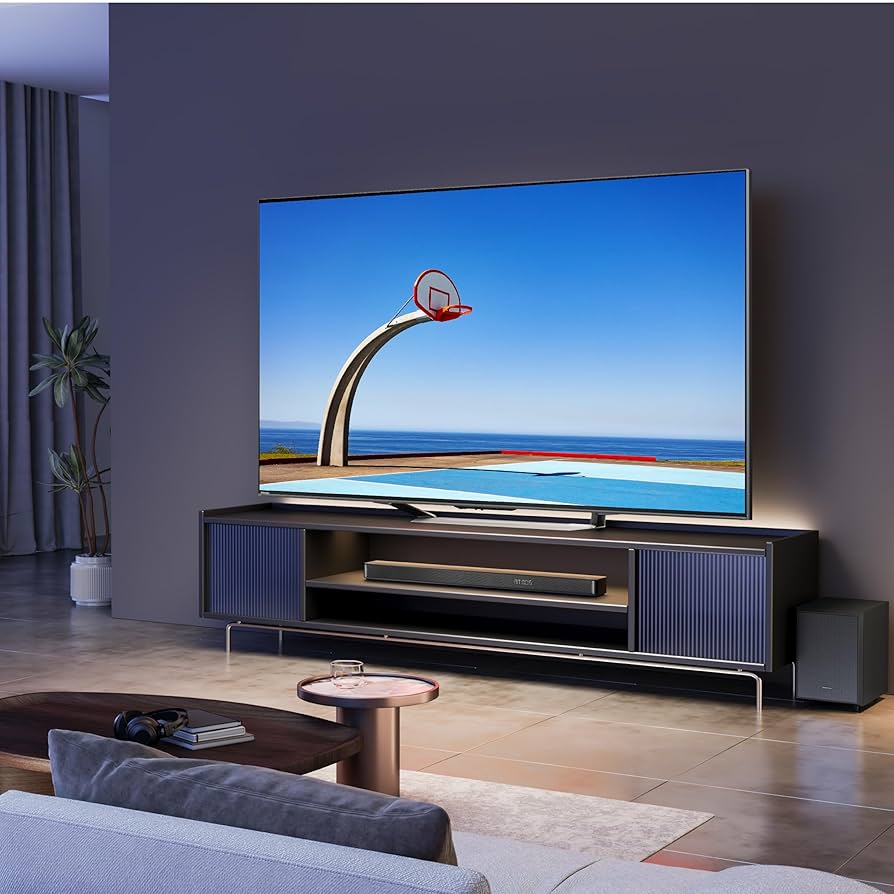
To my mind, Hisense 55U7N is the best 58-inch TV with 4K LED display that includes modern features typically seen in higher-end models, such as HDMI 2.1 support, a refresh rate of up to 144Hz (great for gaming), and VRR (Variable Refresh Rate).
I like that it delivers strong picture quality with deep blacks and vibrant colors thanks to its VA panel and local dimming, which enhance contrast in dark scenes watching Netflix at night.
Although it doesn't get as bright or have the same contrast as the higher-end U8N, this TV does a great job of handling glare, making it perfect for bright rooms like my living room.
It also supports Dolby Vision, which makes the picture look even nicer, making it a great, affordable HDR TV.
For streaming
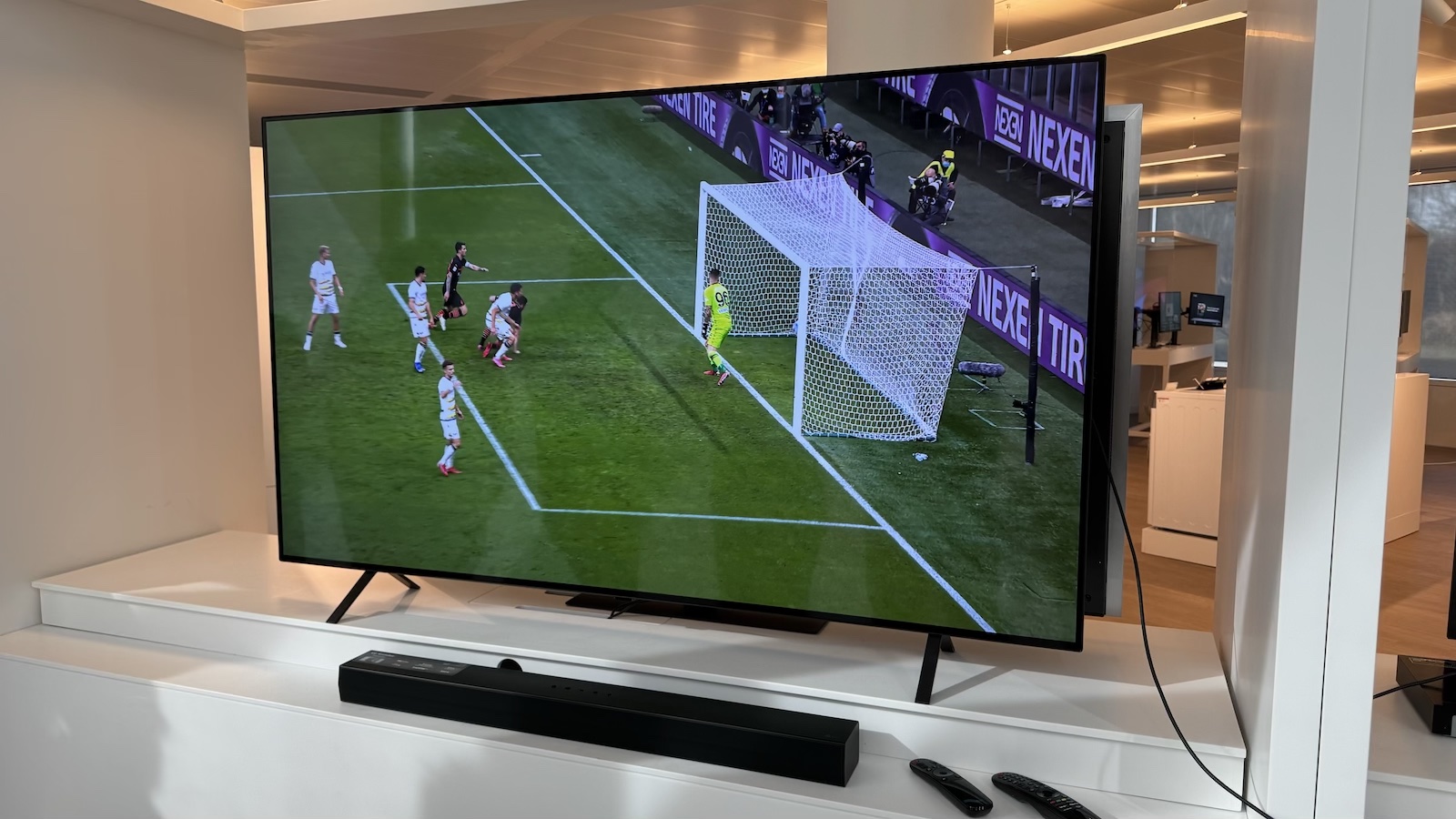
The LG OLED B4 can deliver perfect picture quality thanks to its OLED technology. It creates perfect blacks, bright colors, and endless contrast, making it the best 58-inch TV I’ve ever tested from LG.
The TV runs on LG’s webOS Smart TV system, which is easy to use and provides access to streaming apps, voice assistants, and smart home features. This TV for streaming is great for everyone - movie lovers, gamers, and casual viewers.
It uses AI to adjust the picture and sound in real time, giving you the best experience. With webOS, you can easily watch Netflix, Disney+, and Prime Video. It also works with Google Assistant, Alexa, and Apple HomeKit for smart home control.
Budget-friendly 58-inch TV
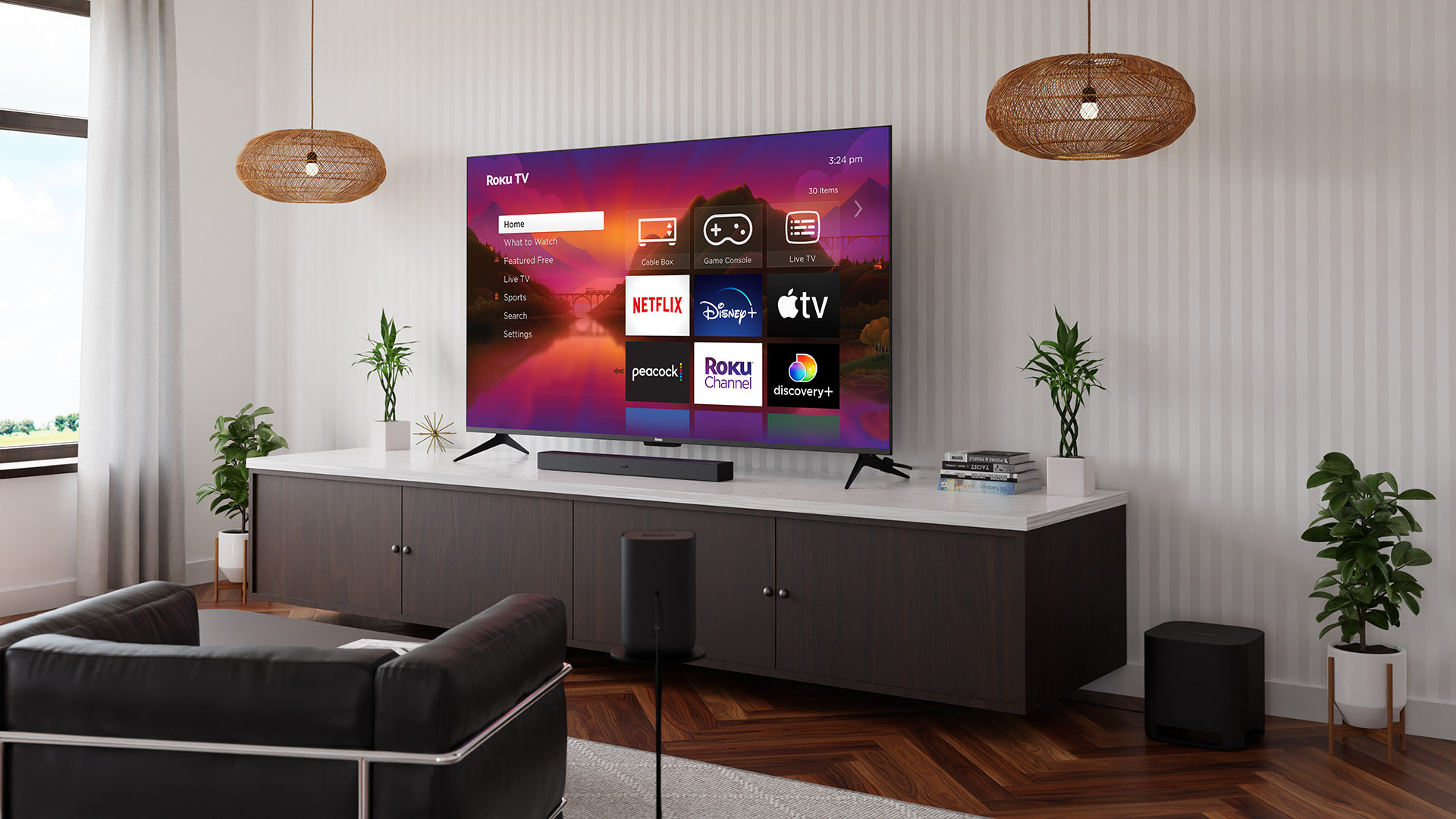
The Roku Select Series has 4K Ultra HD resolution, which shows four times more detail than regular HD. I tried it and was impressed by how clear and colorful the picture is. It’s perfect for streaming movies, gaming, or watching live TV because everything looks sharp.
The screen adjusts to the room’s lighting automatically, so you don’t have to change the brightness yourself. This makes it a wonderful TV for conference rooms since it is great for daytime and nighttime viewing.
This 58-inch TV uses Roku’s built-in operating system, giving you easy access to apps like Netflix, Hulu, Disney+, and Tubi. My favorite feature is the voice-activated Roku remote, which makes navigation easy. However, switching between Roku and cable might require another remote, so I suggest trying a universal remote to solve this.
With 3D surround sound
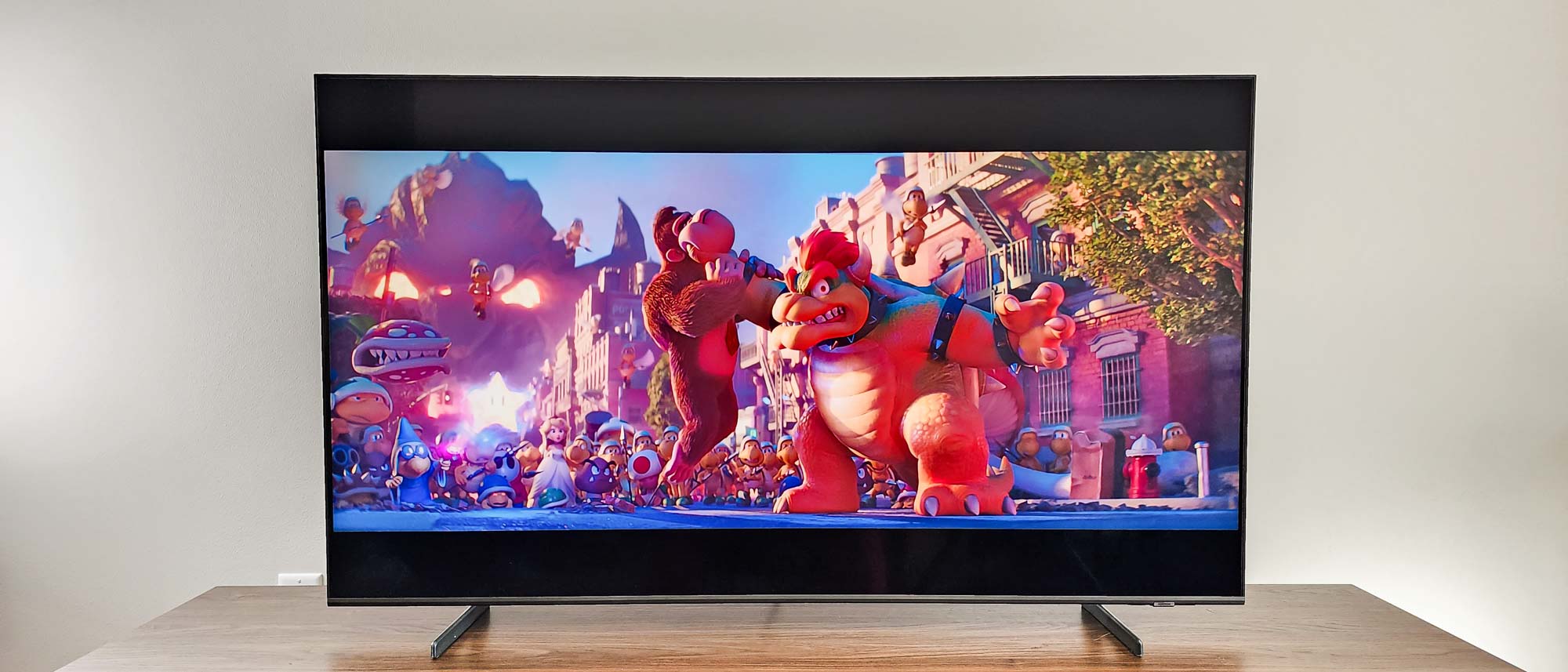
The Q60C uses Quantum Dot technology to show a billion shades of color, making everything on the screen look extremely realistic. This TV under $700 is a great option for high-quality viewing because it has a Quantum Processor Lite that automatically improves the quality of your content with 4K upscaling.
Even older shows and movies with lower resolution look clearer, delivering a better viewing experience. The processor enhances every scene by sharpening details, adding depth, and making everything look smooth.
The Dual LED technology adjusts the backlighting with warm and cool tones to create better contrast. Dark scenes look deeper, and bright scenes are more striking, improving the overall picture quality.
I also like that the 58-inch Smart TV has Object Tracking Sound Lite, which creates 3D surround sound that matches the action on the screen. This makes it easy to fully enjoy my favorite adventure movies.
Universal 58’’ TV
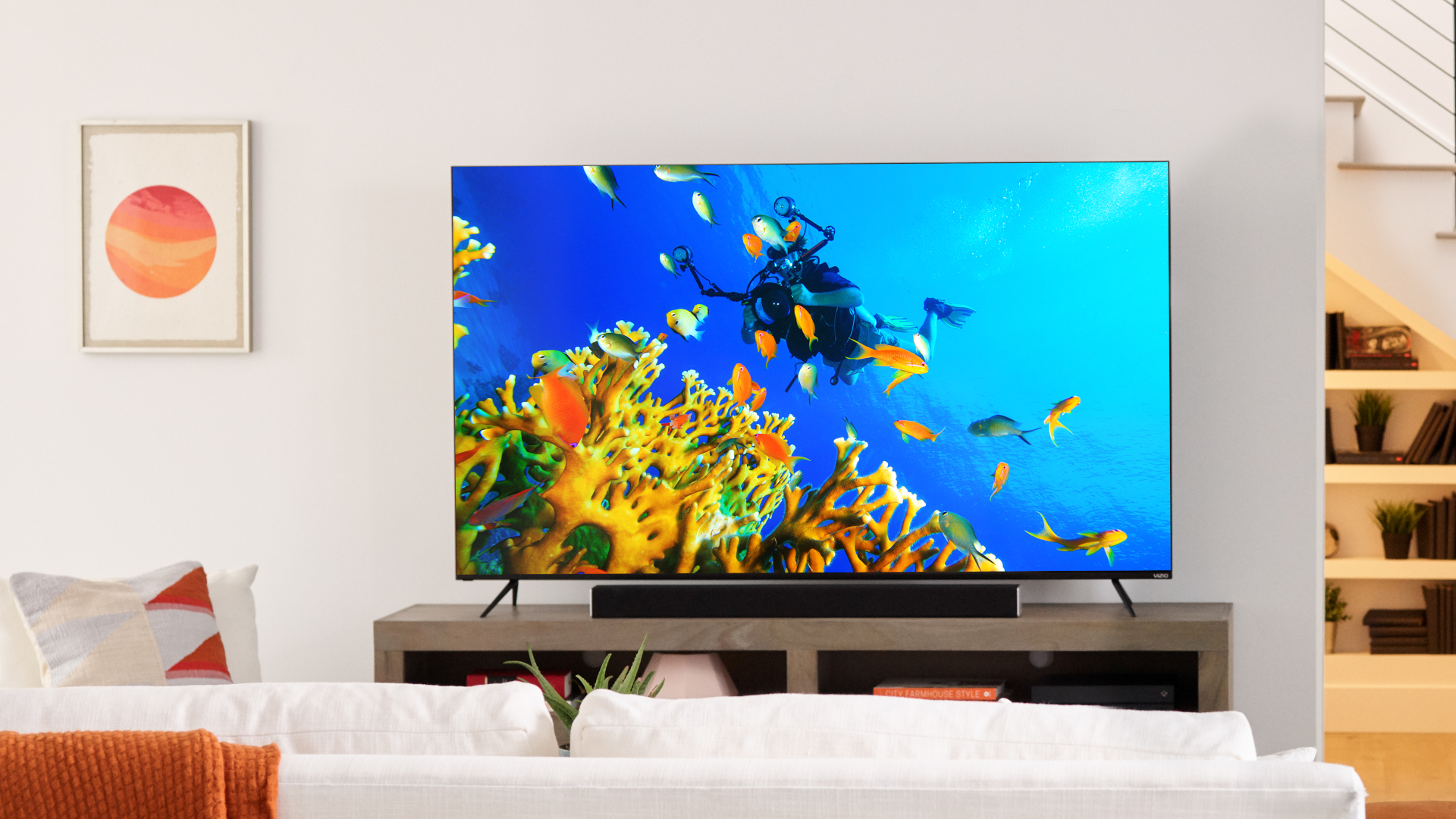
This 58-inch TV has over 8 million pixels in its 4K Ultra HD display, offering an amazing level of detail. Compared to the 1080p TV I used before, the 4K resolution makes every scene look incredibly sharp. It’s perfect for watching movies, TV shows, or gaming. The extra pixels create lifelike images, especially when watching high-quality content.
The Active Full Array backlight is another great feature. It adjusts the screen’s brightness based on what’s being shown, making dark areas look deeper and bright parts more vibrant. This adds a sense of depth to every scene.
With 10 local dimming zones, the TV can control the brightness in different areas of the screen independently. This improves the contrast, so dark scenes feel richer and bright scenes stand out more, making it an excellent choice as a TV for PC monitor.
These include how clear the picture is, smart features, sound quality, price, and how well the TV is made.
Picture Quality
✔️ Resolution: Go for 4K resolution. It’s now the standard and gives you sharper and clearer pictures than older 1080p TVs. 4K is important for a 58-inch TV so you can enjoy all the details and not end up with blurry images.
✔️ HDR: HDR makes colors look more realistic and improves the contrast. It brightens up light scenes and adds depth to dark ones. Look for TVs with HDR10, HDR10+, or Dolby Vision, as they deliver better visuals.
✔️ Panel Type: The kind of screen panel affects how the picture looks and how well you can see it from different angles. LED and QLED panels are more colorful, while OLED panels are great for deep blacks and contrast but can be pricey.
❌ Low resolution: Avoid TVs with less than 4K resolution. A lower resolution, like 1080p, will make the picture look less clear on such a large screen.
❌ No HDR support: Skip TVs that don’t have HDR formats like Dolby Vision or HDR10+. Without HDR, colors may look flat, and the contrast won’t be as good.
❌ Low refresh rate: Try to get a TV with at least 120Hz, especially if you like gaming or watching sports.
Smart Features and Operating System
✔️ User-Friendly Interface: A good operating system, like Roku, Android TV, Tizen, or webOS, makes the TV easy to use. It should let you quickly open apps like Netflix, Disney+, YouTube, or Amazon Prime Video.
✔️ App Choices: Check if the TV supports popular apps. It’s a plus if it works with voice assistants like Alexa or Google Assistant, as this can make controlling the TV more convenient.
✔️ Connectivity Options: Make sure a 58-inch Smart TV has Wi-Fi and Bluetooth. Also, look for multiple HDMI and USB ports to connect devices like soundbars, gaming consoles, or streaming sticks.
❌ Extra Features You Don’t Need: Expensive extras like 8K resolution, AI upscaling, or high-end gaming features might not be worth it if you just watch movies or TV shows. I suggest focusing on what you actually need.
❌ Old Operating Systems: Avoid TVs with outdated software that might be slow or limit access to streaming apps. Stick with modern systems like Roku, Android TV, Tizen, or webOS.
❌ Missing Apps: Don’t choose a TV that doesn’t support popular apps like Netflix or Disney+. Always check if it has the apps you use.
❌ Weak Build Quality: Cheaper TVs sometimes have fragile frames or bezels that can break or bend over time. A sturdy design is better, especially if you’re mounting the TV on a wall.
❌ Ignoring Warranty: Check that the TV comes with a warranty and has good customer support in case you need help later.
Audio Performance
✔️ Built-In Speakers: Sound might not be the first thing you think about when buying a TV, but it’s still important. TVs with audio features like Dolby Atmos or DTS:X can make the sound much better and improve your overall experience. For bigger rooms, getting a soundbar or home theater system would be a great idea.
✔️ Sound Modes: Some TVs let you choose different sound settings, like movie, sports, or music modes. These options help match the sound to what you’re watching for a better experience.
❌ Avoid Weak Sound: Many TVs don’t have great built-in speakers. If the TV’s sound is poor and it doesn’t support extras like soundbars or Dolby Atmos, the audio may disappoint you. Make sure it has options like HDMI eARC, optical audio, or Bluetooth for connecting external speakers.
Design and Build Quality
✔️ Slim Design: A thin TV looks stylish and fits nicely in most rooms without taking up too much space.
✔️ Build Quality: Good materials make the TV stronger and more durable. This is especially important if you plan to mount it on the wall or use a stand.
✔️ Viewing Angles: It’s important to check how well the screen looks from different spots in the room. This matters a lot for a 58-inch TV, especially if you want to use it with a corner TV wall mount. IPS panels usually provide better viewing angles compared to VA panels.
❌ Low-Quality Panels: Go for trusted panel types like QLED or OLED, which give better brightness, colors, and overall picture quality than basic LED panels. Avoid unbranded or cheap panels that may have dull colors.
❌ Limited Viewing Angles: If you are planning to watch the TV from different sides of a room, don’t choose a model with bad side views. VA panels often have this issue.
❌ Wrong Size for Your Room: Make sure the TV size matches your space. A 58-inch TV can feel too large for a small room or too small in a big living area. Perhaps, consider how far you’ll sit from the screen.
Gaming Features (if applicable)
✔️ Refresh Rate: Gamers should look for a 240hz TV, or at least 120Hz and Variable Refresh Rate (VRR) support for smooth, high-quality gameplay.
✔️ HDMI Ports: Modern gaming consoles need advanced HDMI ports to support fast refresh rates and 4K resolution.
✔️ ALLM (Auto Low Latency Mode): This feature automatically changes your TV to Game Mode when it detects a gaming console.
❌ No HDMI 2.1 Support: Don’t go for a 58-inch TV with HDMI 2.0 ports if you plan gaming with the latest consoles. They won’t support 4K at 120Hz or newer gaming features like VRR.
❌ Missing Gaming Features: Avoid TVs that don’t have features like Game Mode, VRR, or ALLM. Without them, the gaming experience may not be as optimized.
❌ Poor Contrast and Black Levels: Avoid TVs with weak contrast or bad HDR. Games with dark scenes, like horror games, may look washed out or lose important details.